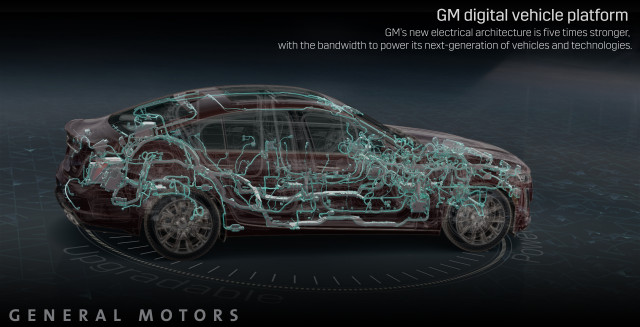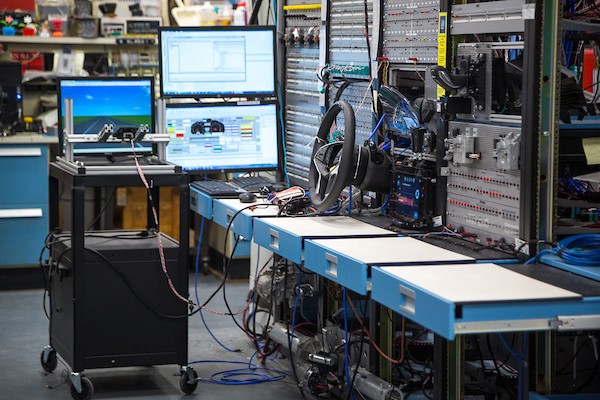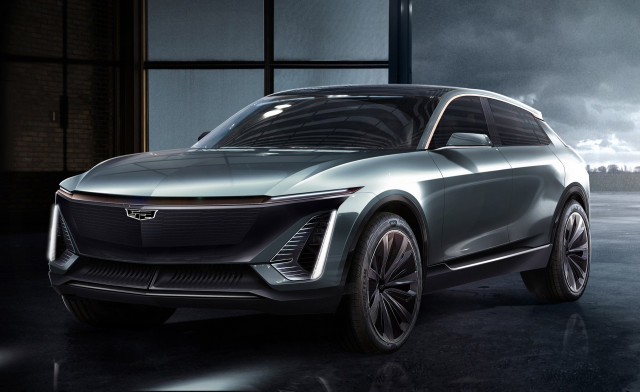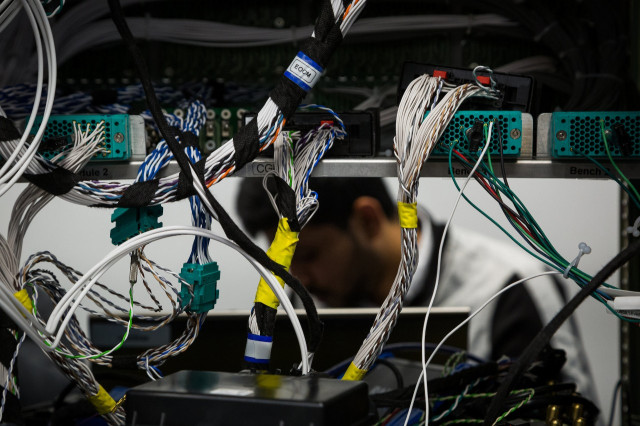
General Motors next-generation electrical platform
As future cars go electric, self-driving, and more connected with the outside world, they're going to faster connectivity inside the vehicle.
To that end, General Motors just introduced a new electronic platform for its vehicles that it says can carry 4.5 terabytes of processing power per hour, five times what the current system can carry.

General Motors next-generation electrical platform
It will also bring GM vehicles the ability to receive updates over the air, similar to Teslas.
In a statement announcing the new architecture, GM President Mark Reuss said, "Our new digital vehicle platform and its eventual successors will underpin all our future innovations across a wide range of technological advancements, including EVs and expanded automated driving.”
The company says the system will be necessary to meet its goal of building cars that can support a world with "zero accidents, zero emissions, and zero congestion."
DON'T MISS: Long-range Cadillac SUV to lead GM's next electric-car push, in 3 years
Reuss announced that the new electronic architecture will arrive in the 2020 Cadillac CT5 sedan, which debuted at the New York auto show in April, and is expected to go on sale later this year. Reuss said the system will roll out across most of GM's lineup by 2023. GM has said that Cadillac will become its lead electric-car brand starting with a new generation of electric models in 2022.

Future Cadillac long-range electric large luxury utility vehicle (rendering), 2019 Detroit auto sho
The new system will offer three levels of ethernet connectivity: 100 megabaud, 1 gigabaud, and 10 gigabaud. Those will also allow the system to be expanded over the life of the vehicle.
GM says the new system rides on top of an updated CAN bus architecture, which the company says will give it even higher speeds, along with the ethernet capability.

General Motors next-generation electrical platform
Perhaps more importantly, the system will bring new cybersecurity protocols to GM's cars. Until now, most cars relied on being removed—or "air-gapped"—from the Internet to resist hacking attempts. But several hackers have demonstrated the ability to break in and take control of cars and raised doubt about the security of those systems as more cars receive software updates at dealers, use electronic keys, and connect their infotainment systems to drivers' cell phone network connections.
READ MORE: Barra blogs again: GM plans to double EV, self-driving investments
GM chairs the Automotive Information Sharing & Analysis Center, a community of private and public-sector partners that shares and analyzes intelligence about emerging cybersecurity risks for the automotive industry.
"The critical role of software and its importance to our vehicles, both now and for years to come, cannot be overstated," Reuss said.